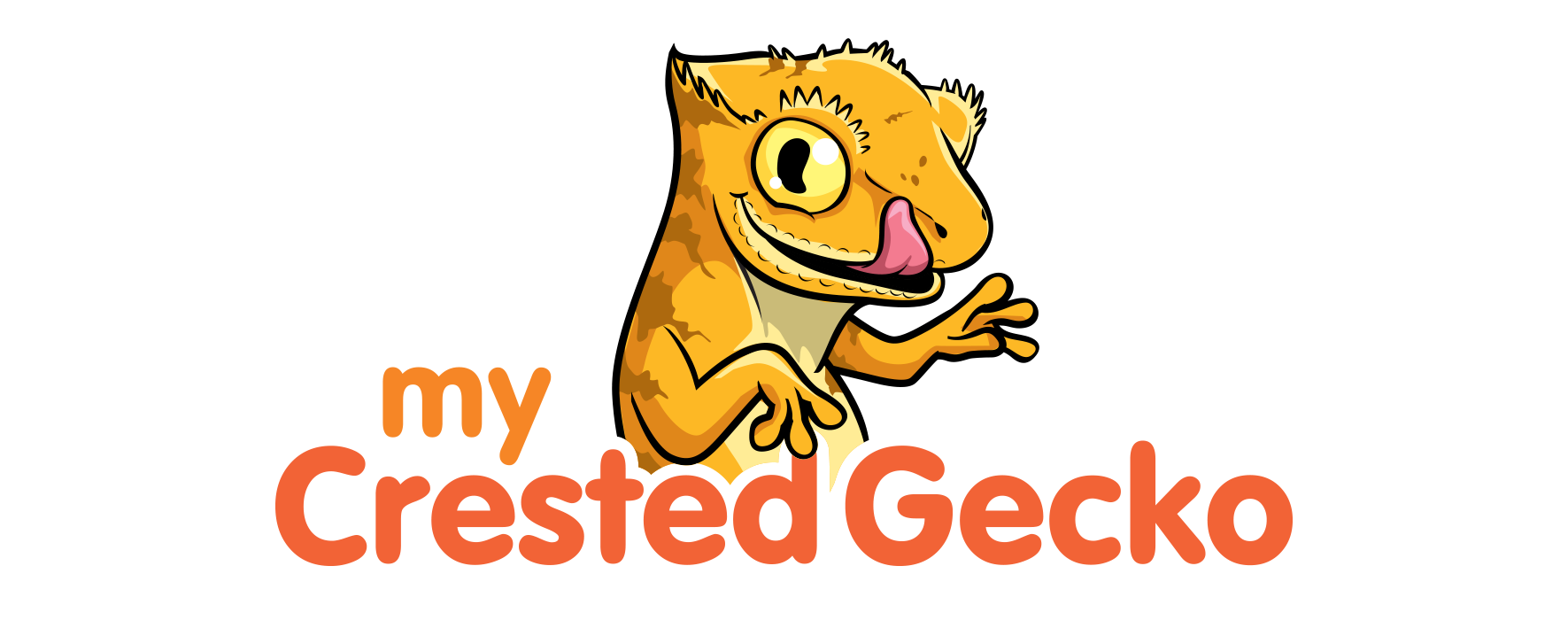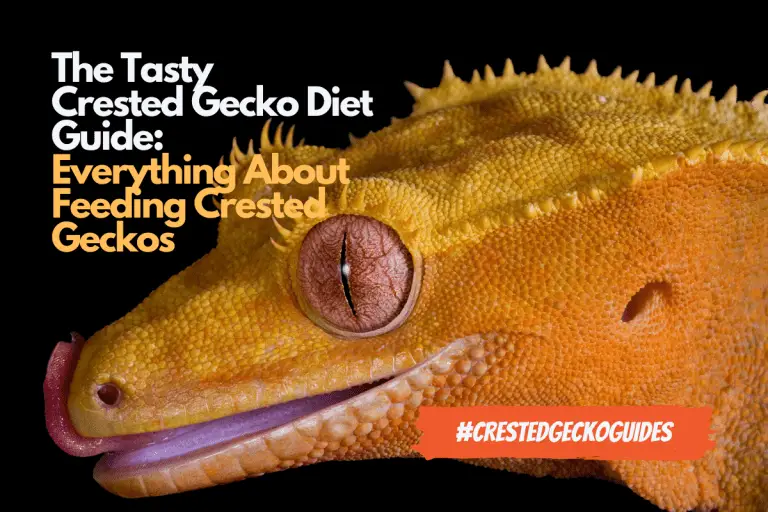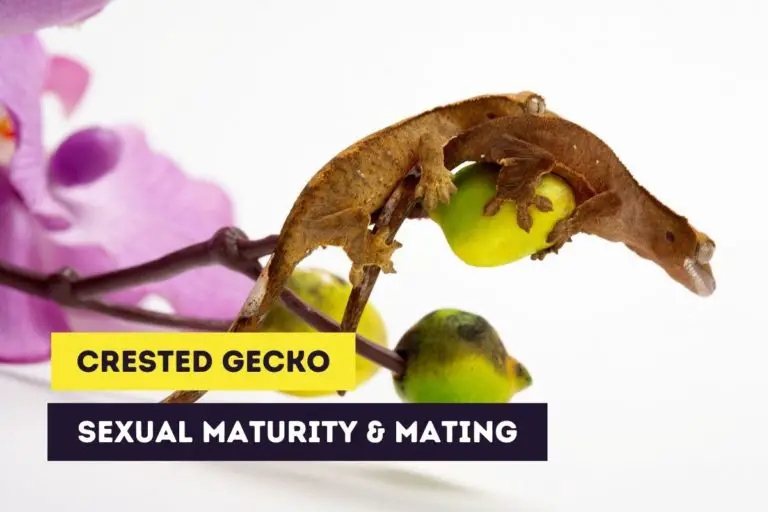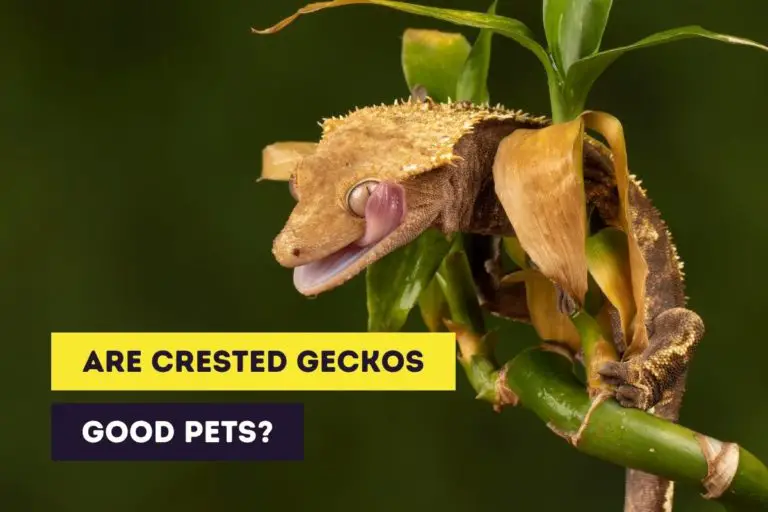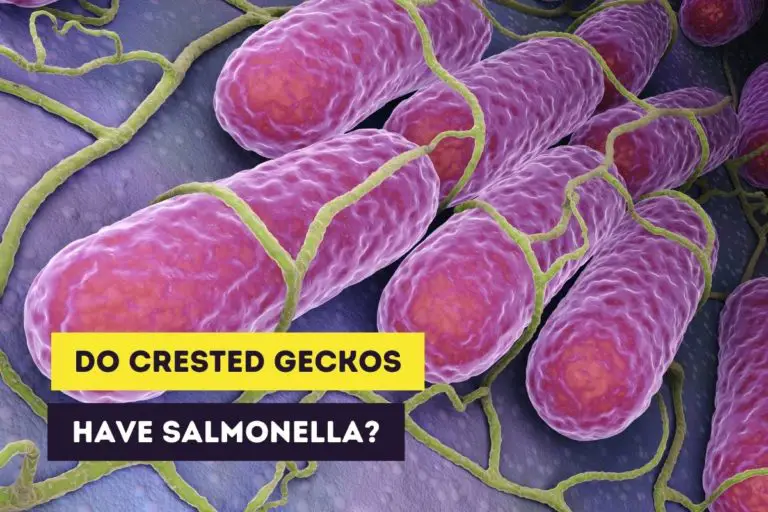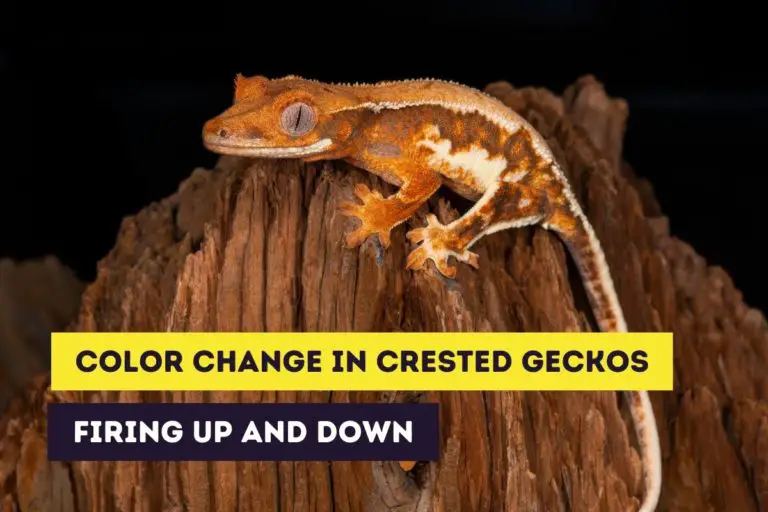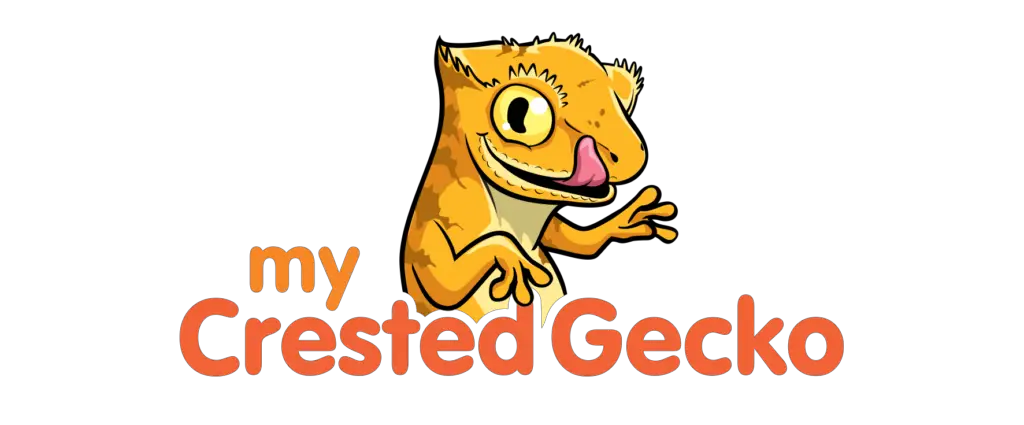Crested Gecko Shedding: Common Problems and Solutions
Estimated reading time: 9 minutes
If you’re a bit familiar with reptiles, you’ll know that they shed their skin. The shedding process is natural and removes the old and dead skin to replace it with a new layer of skin.
Crested geckos shed their skin just like other reptiles. Hatchlings and juvenile crested geckos will shed more often than adult crested geckos. When a crested gecko sheds its skin, it comes off as a whole layer. Most crested geckos will eat the dead skin immediately after they’ve shed.
Since shedding is a natural process, your crested gecko won’t have any trouble with it under normal circumstances. However, under certain circumstances, your crested gecko might experience shedding problems and will need some extra help.
If you’re interested in stickers or other products of crested geckos, you can always visit our Etsy Shop, which is called Artful Animalia. We currently only send stickers in the United States. If you’re interested in certain crested gecko-related products, don’t hesitate to contact us.
In this article, you’ll learn everything there’s to know about the shedding process of crested geckos and any problems you might encounter.
This site contains affiliate links to products we recommend and use ourselves. We may receive a commission for purchases that you make through these links. If you’re interested in learning more about our affiliate links, please visit our (affiliate) disclaimer.
Why Do Crested Geckos Shed?
Crested geckos shed their skin throughout their lives (ecdysis). Shedding is associated with the growth of the crested gecko: a new layer of skin replaces the old and dead skin. The skin is usually replaced as a whole layer. Most crested geckos will eat the dead layer and get nutrients from it.
The skin of crested geckos consists of two large layers: the dermis and the epidermis. The epidermis is the skin’s outer layer, and new cells are constantly created at the bottom of it. These skin cells fill up with keratin, a protein that gives protection and prevents water loss.
When the skin cells are fully grown and filled with keratin, they die off. The resulting old and dead skin needs to be replaced with new skin. Unlike our skin cells, the old and dead skin of crested geckos comes as a whole layer. In some cases, the dead layer breaks into pieces and the shedding process happens in stages.
When Do Crested Geckos Shed?
Hatchlings and juvenile crested geckos will shed more often than adult crested geckos. Hatchlings will usually shed weekly, while adult crested geckos will usually shed monthly. It is difficult to tell when a crested gecko is shedding, but certain signs can indicate if it is shedding.
Signs of shedding
The telltale sign of the shedding period is the visual sign of old dead skin coming off your crested gecko. But there are a few other signs that let you know that your crestie is (going) to shed:
- dull or pale color
- loss of appetite
- sticking problems (for example, problems with sticking to terrarium walls)
How often do crested geckos shed?
Because shedding is associated with your crested gecko’s growth, it will occur more frequently when the crested gecko is young. Hatchlings will shed more often than juveniles, and juveniles will shed more frequently than adults.
The following table gives you an idea of how often your crested gecko will shed.
| Age | Shedding Frequency |
|---|---|
| Hatchling | Weekly |
| Juvenile | Every two weeks |
| Adult | Every two weeks to monthly |
Of course, every crested gecko is different and the shedding process will depend a lot on how fast your crested gecko grows. Your crested gecko may take three weeks instead of two to shed its skin. You might not even see the shedding when your crestie sheds and eats the skin while you were sleeping.
How Do Crested Geckos Shed?
When a crested gecko is shedding, it will eat the old layer of skin. The crested gecko will start by licking off the old skin from its snout. The skin will slowly come off. Your crested gecko will use its mouth and tongue to peel off the entire old skin layer and eat it.
It’s sometimes not easy to tell if your crested gecko has shed because it will eat the skin (also called ceratophagia). Crested geckos do this to get the nutrients from the old skin cells back in their system and prevent leaving a trail for potential predators.
When the shedding process is completed your crested gecko will be as colored and patterned as before or can even have brighter colors or more patterns. This is especially the case for hatchlings and juvenile crested geckos.
Shedding Problems
What causes shedding problems?
Most crested geckos won’t have any problem with shedding their skin. However, sometimes your crested gecko might need some extra help. Shedding problems (dysecdysis) can be caused by:
- improper living conditions: low humidity is one of the most common reasons for shedding problems. Your crested gecko needs to have at least 50 percent relative humidity and preferably 70 to 80 percent. Such high humidity will help loosen the skin. A crested gecko will also need enough abrasive surfaces such as branches.
- underlying health problems: a less common reason for problems with shedding is an underlying health issue. Your crested gecko might be sick and not have enough strength to complete the shedding. Diseases and parasites can cause your crested gecko to have problems removing the excess skin but can also cause it to shed more frequently than usual. It’s essential to get your crested gecko diagnosed by a specialized vet and get it treated in such cases.
How to treat a shedding problem?
When your crested gecko (regularly) experiences an incomplete shed and can’t remove the old skin by itself, you’ll need to intervene. You can do this by:
- increasing the humidity levels when shedding
- removing the dead skin with misting or massage
Of course, when you notice that the dead skin is constricting the blood flow around body parts, like the toes and tail, you need to intervene immediately and try to remove the skin yourself.
Increasing the humidity to 80 to 90 percent
Shedding problems are often caused by inadequate hydration and improper humidity levels. So when you notice that your crested geckos have recurring problems with shedding their old skin, you might want to increase the humidity in the shedding period in the range of 80 to 90 percent with proper ventilation and only for a short period.
Helping your crested gecko
When your crested gecko experiences an incomplete shed and can’t remove the old skin by itself, you’ll need to intervene. The usual problem areas are the top of the head, the toes, and the tail tip. When the old dried skin is left in place, it can constrict the toes and tail tip blood flow. If left untreated, this will cause a loss of the toes or tail tip.
So, if you need to aid your crested gecko with his shedding, you’ll have to remove the skin yourself manually. You can do this by:
- misting your crested gecko with tepid water
- use mineral oil and apply it with a cotton swab
- massaging the skin with a cotton swab
Next, you’ll gently remove the old skin from your crested gecko with a cotton swab or (in rare cases) with a tweezer. In both cases, you should be very careful, but when using a tweezer, you should take extra caution not to damage your crestie’s new skin. Also, never pull off the skin with your hands!
If massaging the skin and using the cotton swab doesn’t work right away, you can also put your crested gecko in a “sauna”, a small tub or container filled with paper towels soaked in lukewarm water. Don’t use warm water (and never use water with a temperature above 85°F) as crested geckos are cold-blooded and can’t handle too sudden heat changes.
Leave your crested gecko in the sauna for 15 to 30 minutes and then try removing the old skin again with a swab. You can also use a special spray from Zoo Med to aid when your crested gecko isn’t as easy to handle.
If the shedding problem is persistent you should seek the advice from a vet. If there’s an underlying health issue, it can be treated.
Tips and Tricks
If you want to make sure that your crested gecko gets the perfect conditions to shed its skin and stay healthy, you can use the following tips and tricks:
- keep the humidity above 50 percent: it can be difficult to keep the relative humidity in a terrarium at the proper levels in dry areas. The humidity should never fall beneath 50 percent and should be at levels of 70 to 80 percent for most of the day and night. High humidities promote the shedding process and make it a lot easier for your crestie to peel off the skin.
- get a “shedding” box: although not a necessity, you can promote shedding by creating a special area in the terrarium where the humidity is high enough throughout the day. You can create a “shedding” or “moist” box by putting damp paper towels in a hiding area or container. The humidity levels can reach above 80 percent in this area. You can also buy premade shedding boxes which also serve as a hiding place for a crested gecko. Just make sure, like always, that your terrarium is large enough to fit it in.
- use moist-absorbing substrate: certain types of substrate are more suited for a high humidity terrarium. Substrates like coconut husk and spaghnum moss aid in keeping the humidity in the terrarium at an acceptable level.
- put enough abrasive surfaces in the terrarium: abrasive surfaces such as branches, hides, cork bark are perfect to aid your crested gecko with its loose skin. Your gecko can rub against these surfaces and the skin will come off more easily.
- limit handling your crestie: getting a new skin can be stressful for your crested gecko and is usually not the time to handle it. Give your crested gecko some time to rest so it can fully focus on peeling the old skin unless there are shedding problems, in which case you have to handle your crestie (see above).
- remove any leftover food: crested geckos aren’t big eaters and when they shed they’re even less hungry. You should still give food to your crested gecko but pay special attention to remove any leftovers so there’s no bacteria buildup.
Related Questions
How long does it take for a crested gecko to shed?
The normal shedding process doesn’t take too long and can take 15 to 30 minutes although not every gecko is the same. When your crested gecko sheds and eats its skin at night you won’t even notice the shedding.
Do crested geckos need to bath?
Crested geckos don’t like water and bathing a crested gecko can be dangerous and stressful for your crestie. Bathing is in most cases not necessary. Instead of bathing, you can remove any debris or dirt with a damp cotton swab or a damp paper towel.
Want to Learn More?
If you want to learn more about crested geckos as pets, please read the following articles.
If you’re interested in getting crested geckos as pets you should also definitely read our article about baby and juvenile crested gecko care or (adult) crested gecko care.
